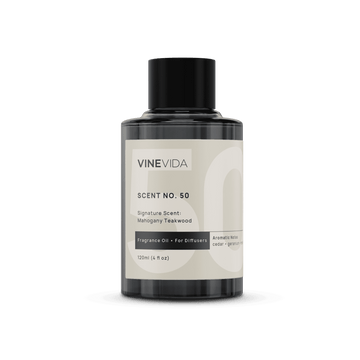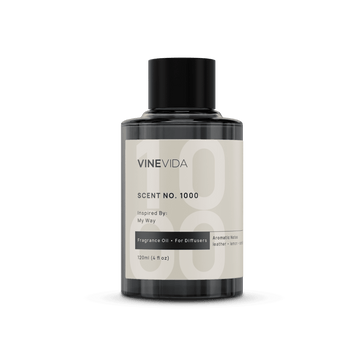When people start to look at using aromatherapy and oils, we are often asked What is Tea Tree oil good for? In short, it’s good for most things. It’s a wonderful starter oil for natural remedies and aromatherapy because of its many antifungal, anti-microbial, anti-bacterial, antiseptic, and anti-inflammatory constituents.
Historically, aromatherapists have been used to ease symptoms and support normal immune function for things such as sinus congestion, bronchial ailments, cold, flu, asthma, chickenpox, shingles… and much more!
Tea Tree Oil Constituents
The oil is distilled from the leaves of the Melaleuca Alternifolia tree, which is native to the low-lying wetlands of the Northern New South Wales region of Australia.
The indigenous people of Australia use the tree in their traditional natural medicines. Historically, they used the leaves and branches, mostly brewed and steeped in hot water. The vapors from the pot of freshly brewed leaves were inhaled to help with the symptoms associated with bacterial respiratory infections, bronchitis, and sinus congestion.
Thankfully, the hard work has already been done for us, and we are left with a small bottle (well, depending on your intended use schedule. It could be a big bottle…) of mighty oil full of antifungal, anti-inflammatory, antiseptic, antimicrobial and antibacterial terpenes.
What are Terpenes?
Terpenes, also known as Terpenoids, are part of a larger group of chemical compounds. These chemical compounds are secondary metabolites (primary metabolites are used for primary functions i.e., breathing, cell production, etc.) found in plants that can give off smells and aromas to attract pollinators or change the taste of leaves to make them taste bitter or pungent to repel predators.
Related Content: Tea Tree Oil for Beard – An Oil to Grow Beard to its Fullest
How to Use Tea Tree Oil
Below you will find a list of physical/emotional ailments that Tea Tree oil can help with. At the very bottom of this article (please stick around), you will find some recipes using the oil and what it can be used for.
Colic / Stomach cramps
Tea Tree oil is wonderful for soothing massage oils for colic or stomach cramps - even menstrual pains. Blend a massage oil and rub into the stomach area just underneath and around the center of the stomach around the belly button (not inside the belly button).
Colds, Coughs, and Respiratory Illness
The tea tree is bursting with an antimicrobial constituent called 1,8 cineole, proven to help with respiratory problems and support normal immune function when battling bronchitis.
Tea Tree oil can help with the symptoms of colds and coughs in many ways. First, perhaps try gasping the fumes (not the oil) directly from the bottle to get the constituents of the oil now into your bronchial tubes and down to your lungs as quickly as possible.
The oil can be used via inhalation methods such as vaporizers using hot water or electrical vaporizing technology, inhalers, or mouthwash.
Mouth Ulcers / Canker sores
Mouth ulcers, known as canker sores, are sore patches, lumps, or bumps that may appear on the mouth, lips, or tongue. They can occur for various reasons, such as an accidental bite or irritation from acidic foods - for instance, pineapples. Tea Tree oil components will help to disinfect the mouth and reduce inflammation or swelling when used as a mouth wash.
Circulatory Stimulant
Using Tea Tree in a massage oil (diluted) on areas that have been affected by illness or injury, the oil and the massaging motion encourage an increase in the body’s circulation (blood, lymph, or hormonal). To support and promote the body’s normal immune function after trauma.
Dandruff
Dandruff is dead skin found on the scalp - it can be caused by many factors and conditions such as eczema and psoriasis, to name just two. Tea Tree oil can assist in clearing up the dead skin cells or “flakes” by stimulating the sebum glands on the head to produce more oil to rehydrate the flaky skin. This will also use the antibacterial and anti-inflammatory constituents to effectively clean the hair and scalp, keeping germs away and preventing irritated skin infection.
Related Content: Does Tea Tree Oil Help With Dandruff?
Herpes Simplex (Cold sores, Chickenpox, Shingles, Genital Warts)
The types of Herpes Simplex infections are all caused by the same virus. The infections can take different forms, and the symptoms associated with the virus can be helped by the constituents of a Tea Tree oil preparation massaged into the affected areas (given the right dilutions).
Candida Infections / Thrush
Candida infections are caused by fungus. Depending on where it is on the body (vagina, penis, skin, or mouth), symptoms of the disease can benefit from being treated with Tea Tree’s natural anti-fungal chemistry.
Athlete’s Foot
Athlete’s Foot is another fungal infection that solely (see what we did there?) affects feet, but if left untreated, it can spread to toenails and become a fungal nail infection too. The antifungal constituents of Tea Tree oil, as well as its different methods of application to affected areas, means we can target the areas of infection with foot baths, topical ointments, and rubs to get rid of the infection.
Furthermore, the Tea Tree oil can be used to be added to the rinse cycle of a wash to sterilize socks (and shoes). It’s very important to sterilize the socks, particularly when you have an athlete’s foot because you will just keep re-infecting your feet if you wear the same set of socks.
Head Lice Infestation and Prevention
Head Lice live exclusively on the human scalp and feed solely from human blood. A live infestation of head lice, otherwise known as “nits” (the eggs), can be identified by an itchy scalp, small brown or white (empty) eggs on the shaft of the hair.
You can also see the louse moving amongst the hair. They are wingless parasites, so they can only be caught by head-to-head contact with an infected person. Very common in children (and parents of small children). The components of Tea Tree oil are a great natural insect repellent.
Especially useful when combed through as a conditioning treatment during an infestation, removing and killing the lice.
Daily hair spray will deter the lice from moving back in to prevent head lice or nits from becoming a recurring problem.
Related Content: Does Tea Tree Oil Kill Lice?
Oily Skin / Acne
The antibacterial constituents of Tea Tree oil can help in the treatment of acne. A daily face wash containing the oil will wash away excess sebum and eliminate bacteria from the open pores and blemishes.
Related Content: Can You Put Tea Tree Oil On Your Face?
Tea Tree Oil and Emotional Healing
Tea Tree oil is an essential oil that not only provides relief of physical symptoms of disease or illness. It is especially beneficial to those of us prone to anxiety, specifically health anxiety when we constantly fear becoming unwell.
It is helpful when in situations where you may feel as if it could be “unclean” or we might be “at risk” of illness or negative energy. The oil helps us set an emotional barrier or boundary to enhance feelings of being in control of situations. For instance, this is excellent for nurses, carers, or anyone working in a healthcare setting.
Tea Tree Oil for Cleaning
As Tea Tree oil is chock full of antibacterial, antifungal, and antibacterial chemicals, the oil is fantastic for cleaning. It can be used in dilutions to clean a whole raft of things, from spraying in the air to rid the air of spores and viruses to washing machines for a final rinse to clothes - especially clothes affected by fungal infection (see the section on athletes foot).
Related Content: Using Tea Tree Oil for Bed Bugs: Does it Work?
Methods of Use
Always dilute your essential oils into a carrier. Using undiluted tea trees can lead to skin sensitivity.
Essential oils do not mix with water. So if you draw a bath and put in drops of essential oils - the oils will sit on top of the water and absorb into your skin neat without diluting. Depending on your oils, this can cause skin sensitivity and could also be harmful.
Always dilute your essential oils into some sort of carrier, usually some kind of vegetable oil.
The maximum dilution is 3% for tea trees, which means 3 drops of tea tree in one teaspoon of carrier oil.
Related Content: The Best Carrier Oils for Healing Properties of Tea Tree Oil
Tea Tree Oil and Safety
Tea Tree oil is safe; however, please do not use ANY essential oils in the first 16 weeks of pregnancy.
Tea Tree Oil is non-toxic when diluted and used correctly.
Should the oil be accidentally swallowed, drink water or milk to dilute it, and seek medical advice if you feel unwell.
In case of skin irritation or rash, wash the area well and seek medical advice if feeling unwell.
Avoid contact with mucous membranes and eyes; in case of contact, rinse the area well and seek medical attention if feeling unwell.
DIY Recipes for Tea Tree Oil
Cream and Lotions
Creams and lotions are a great base for essential oils. For example, any unscented plain lotion will blend with Tea tree oil and, when used as part of a skincare routine, will keep the skin moisturized and help your skin be free from germs.
- 30 ml of Unfragranced Cream or Lotion.
- 1 drop of Tea Tree Oil (Melaleuca alternifolia)
Method of use: After cleansing with face wash and toner, apply this lotion twice daily, in small amounts using a circular upward motion (go with your circulation, not against it)
Safety: Not suitable for the first 16 weeks of pregnancy. Do not use on mucous membranes (inside nose, mouth, or genitals)
Massage oils
Carrier oils dilute essential oils to be able to massage them into the skin. All essential oils must be diluted with a carrier oil. Any unfragranced oil can be used as a carrier, i.e., grapeseed, coconut oil.
- 1 drop of Tea Tree Oil (Melaleuca alternifolia)
- 30ml of Grapeseed Oil (Vitis Vinifera)
Method of use: This massage oil is especially lovely when warmed slightly and used as a soothing facial massage oil. It can also be used for body massage in all areas (please see safety).
Safety: Not suitable for use during the first 16 weeks of pregnancy, Do not use on mucous membranes (penis, vagina, inside of nose, mouth, and eyes)
Diffusers
Diffusers can be electronic or the old-fashioned small burner with a candle underneath. These are especially useful for coughs, colds, bronchitis, and other respiratory illness.
All diffusers will have their instructions, but generally:
- 100ml of Water
- 3 drops of Tea Tree Oil (Melaleuca alternifolia)
Safety: Not suitable for use during the first 16 weeks of pregnancy.
Steam Vaporizer
Steam vaporizing essential oils is the easiest to help with many ailments, coughs, colds, bronchitis, and all other respiratory illnesses. It’s also a fantastic way to clear out your pores once a week as part of a skincare routine.
- 200ml of Water
- 2 drops of Tea Tree Oil (Melaleuca alternifolia)
Method of use: In a large bowl, which holds at least 200ml of water, put 2 drops of tea tree oil and 200ml of hot (not scalding) water on a level surface. Lean over the bowl and cover your head and bowl, making a “tent.” Breathe in the vapors for as long as you can.
For skincare, don’t wipe your skin until you have finished vaporizing, and then wipe over with a clean cotton pad to remove dirt and excess oil that your pores have secreted. When done weekly, this gives a fantastic deep, pure facial to deep clean pores.
Safety: Not suitable for use during the first 16 weeks of pregnancy. Not ideal for use during the first 16 weeks of pregnancy, Do not use on mucous membranes (penis, vagina, inside of nose, mouth, and eyes).
Gasping
Method of use: Hold the bottle of oil steadily, approximately three inches away from your nose - ensuring it does not touch either nose or lips and take a sharp intake of breath. Until you feel you have inhaled enough vapor to ease the congestion in your bronchioles or sinuses.
Safety: Not suitable for the first 16 weeks of pregnancy. Do not use mucous membranes (inside nose, mouth, lips, and eyes).
Compress
A compress can either be hot or cold; use it as a circulatory stimulant (hot, bring blood to the area you are compressing) and colds (reduces inflammation in the area).
- 500ml Water
- 5 drops of Tea Tree Oil (Melaleuca alternifolia)
Method of use: In a large bowl, fill it with either hot (enough to hold your hand in) or cold water approx 500ml. Then add 5 drops of tea tree oil. Soak a small towel or flannel (if you are over 30, you’ll know what these are) in the mixture - thoroughly wring out the oily water and place it on the area you want to heat up or cool down.
Alternating hot and cold compresses can be used in the same treatment. If you want to draw out the toxins in an abscess, place a hot compress on the area to open up the pores/follicles. After five minutes, change to a cold compress to rest the pores/follicles. Then use a hot one again.
Safety: Not suitable for use during the first 16 weeks of pregnancy, Do not use on mucous membranes (penis, vagina, inside of nose, mouth, and eyes).
Hair And Body Rinse
A sterile rinse with water and 5 drops of tea tree oil makes a wonderful rinse that can be used on the hair daily after shampooing and conditioning. It is safe for all body areas(including sensitive bits, so you can use it in the shower). Use this rinse for Dandruff, candida infections, herpes simplex, athletes' foot, head lice, and oily skin
- 5 drops of Tea Tree Oil (Melaleuca alternifolia)
- 10 ml Vodka (alcohol)
- 500ml of Cooled Boiled Water
Method of Use: After shampooing and conditioning, cover the hair liberally with the rinse, leave for a few minutes and rinse again with clean water. Or when using on the body, flannel over the areas liberally and rinse with clean water.
Safety: Not suitable for use during the first 16 weeks of pregnancy.
Mouthwash
A mouthwash can help with any ailment that needs a clean mouth, for instance, candida infections (or oral thrush), mouth ulcers, or canker sores.
- 250ml Cooled Boiled Water
- 10ml Vodka (Pure Grain Alcohol)
- 1 drop of Tea Tree Oil (Melaleuca alternifolia)
Method of use: Dilute 1 drop of tea tree oil into 10ml of vodka, then dilute this again into 250ml of boiled, cooled water. Use the mouthwash twice a day.
Safety: Not suitable for use during the first 16 weeks of pregnancy, DO NOT SWALLOW.
Related Content: Tea Tree Oil for Toothache: Say Goodbye to Toothache Within Minutes
Hair Treatment For Head Lice
This conditioner can also be used for dandruff as a regular conditioner.
- 200ml of Conditioner (any, cheaper the better).
- 5 drops of Tea Tree Oil (Melaleuca alternifolia)
Method of use: To remove a head lice infestation, cover hair from root to tip with this conditioning treatment and leave for five minutes. Combine through the hair's sections from root to tip with a fine tooth comb. Start by combing the underneath section of hair by the nape of the neck. As you comb out, wipe the comb or rinse and dry before tackling the next section of hair.
Do this for the entire head. Leave the treatment for 45 minutes, so the tea tree can get to work. Rinse the hair with clean water, then comb out again. Have fun counting the corpses in the head louse graveyard.
Safety: Not suitable for use during the first 16 weeks of pregnancy.
Hair Spray
After removing a head lice infestation, we would like to keep it that way. Spray this hairspray liberally on the hair daily to ensure the little mites don’t return!
Method: In a large spray bottle, mix:
- 300ml of Water
- 1 tsp Alcohol to help the oils to disperse
- 10 drops of Tea Tree Oil (Melaleuca alternifolia)
Safety: Unsuitable for use in the first 16 weeks of pregnancy.
So! What is Tea Tree Oil Good For?
Tea Tree Oil is good for most things (who knew?!)
Yes, it is great for a whole spectrum of things. It can help in many ways to reduce swelling, and inflammation, draw out toxins, and least of all, make you nice and clean, smell gorgeous and get rid of pests.
Give the recipes a try, and if you like them or if they do wonders for you, please let us know; we’d love to hear from you!
If you want to use Tea Tree Oil for Your Pets, read the articles below:















